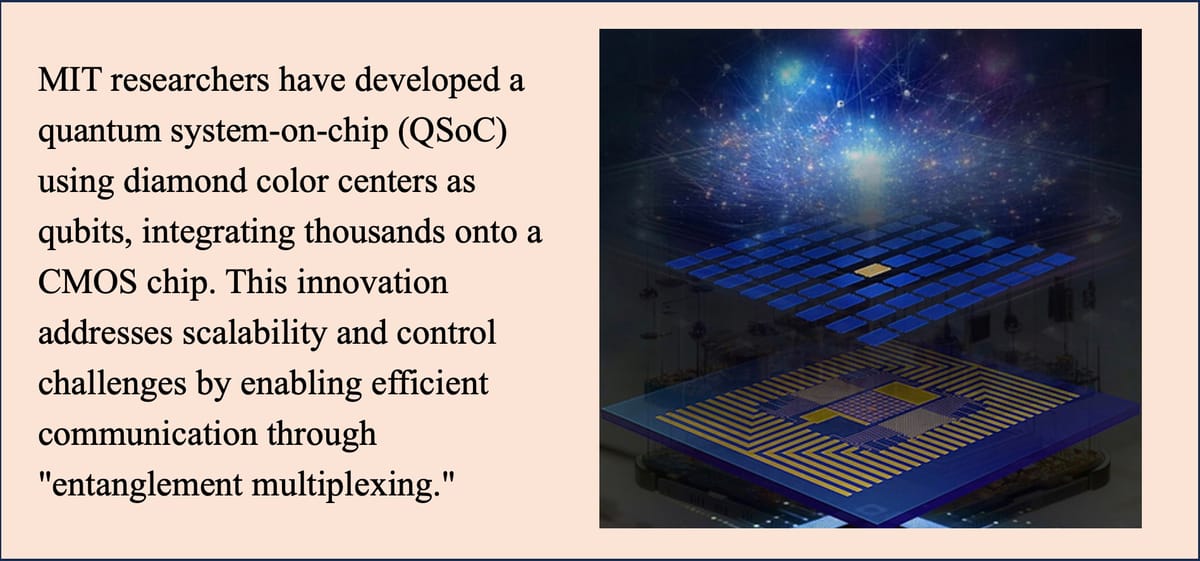Introduction
Quantum computing has long promised to revolutionize technology and solve problems far beyond the reach of classical computers. However, a significant obstacle has been scalability and connectivity of quantum chips. MIT's recent breakthrough has brought us a significant step closer to practical, large-scale quantum computing.
The Breakthrough
MIT researchers have developed a groundbreaking quantum system-on-chip (QSoC) architecture utilizing diamond color centers as solid-state qubits [1]. This innovative approach integrates thousands of qubits onto a CMOS chip, overcoming many of the scalability and control challenges that have hindered quantum computing progress. The architecture allows for "entanglement multiplexing," facilitating efficient communication across the chip, which is crucial for scaling quantum systems.
Comparison with Intel's Efforts
While Intel has made impressive strides in developing CMOS semiconductor quantum qubit chips [2], MIT's approach offers several unique features:
- Scalability and Integration:
- MIT: The use of diamond color centers integrated onto CMOS chips allows for large-scale production and scalability, leveraging existing semiconductor manufacturing processes.
- Intel: Focuses on electron spin qubits in silicon, which, while compatible with semiconductor technology, may face challenges in achieving the same level of scalability and stability as diamond color centers.
- Coherence and Stability:
- MIT: Diamond color centers provide long coherence times, essential for maintaining stable quantum states and performing reliable computations.
- Intel: Silicon-based qubits typically have shorter coherence times, which can impact the reliability of quantum information processing.
- Control and Communication:
- MIT: Advanced control mechanisms and entanglement multiplexing enhance the ability to manage large arrays of qubits, crucial for executing complex quantum algorithms.
- Intel: While robust in error correction, may face more significant challenges in achieving efficient entanglement and communication across qubits.
Conclusion
MIT's achievement in developing a scalable, integrated QSoC architecture using diamond color centers is a significant milestone in the journey towards practical quantum computing. By addressing key challenges in scalability, coherence, and control, this breakthrough brings us closer to harnessing the full potential of quantum technology. As we look forward to future developments, the impact of this innovation on fields such as cryptography, material science, and complex simulations cannot be overstated.
References
[1] MIT News: "Modular, scalable hardware architecture for a quantum computer", https://news.mit.edu/2024/modular-scalable-hardware-architecture-quantum-computer-0529
[2] Business Wire: “Intel Takes Next Step Toward Building Scalable Silicon-Based Quantum Processors”,
https://www.businesswire.com/news/home/20240501215284/en/



Member discussion: